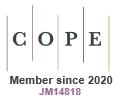Just Accepted
This article has been peer reviewed and accepted for publication. It is in production and has not been edited, so may differ from the final published form.
Evaluation of near-surface atmospheric composition reanalysis data in the metropolis of São Paulo, Brazil
Abstract
Air quality monitoring stations are unequally distributed worldwide despite the relevance of the air pollution impacts. After validation, atmospheric composition reanalysis can fill information gaps in locations where air quality observations are absent. Reanalysis datasets are based on global emission inventories, often overlooking regional characteristics. This underscores the need for regional and local evaluation studies, which remain scarce in South America. This study presents the first evaluation of atmospheric composition reanalysis products in the Metropolitan Area of São Paulo (MASP), Brazil. Two reanalysis products were evaluated: MERRA-2 (Modern-Era Retrospective Analysis for Research and Applications) and CAMS (Copernicus Atmospheric Monitoring Service). Four air pollutants were assessed, considering monthly concentration time series between 2015 and 2019: ozone (O3), nitrogen dioxide (NO2), inhalable (PM10), and fine particulate matter (PM2.5). Near-surface reanalysis was compared to air quality monitoring stations in the MASP. CAMS correctly reproduced the seasonal and interannual variability of concentrations, with significant Pearson correlation coefficients in the range of 0.75-0.89. However, CAMS overestimated O3, PM2.5, and PM10 by 136%, 50% and 16%, respectively. In contrast, MERRA-2 failed to reproduce the main features of air pollutant seasonal variability in the MASP, especially for PM2.5 and PM10. Based on these findings, we conclude that CAMS adequately represents near-surface air quality conditions in the MASP, although bias corrections are required. This means that the CAMS reanalysis data may be used to obtain information about air quality conditions in cities where local monitoring is absent, at least in Brazilian cities near the MASP. Further studies are necessary to investigate the adequacy of CAMS in other Brazilian regions.
ES24041 Accepted 14 April 2025
© CSIRO 2025


